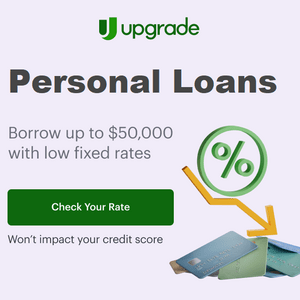 An often-heard term when discussing debt management is consolidation. From the advertisements on TV to offers that come in the mail, debt consolidation has long been a buzzword. This debt management strategy involves taking all your debts (or the costliest debts) and combining them into a single loan.
An often-heard term when discussing debt management is consolidation. From the advertisements on TV to offers that come in the mail, debt consolidation has long been a buzzword. This debt management strategy involves taking all your debts (or the costliest debts) and combining them into a single loan.
Debt consolidation is often achieved through home equity loans, lines of credit, or refinancing. While consolidating debt can lead to a lower interest rate or a lower monthly payment, especially when compared to credit cards, there are several things to consider.
As with any debt management plan, consolidation is not the ultimate answer to debt management. Without changing the spending habits that brought you to this point, debt will never truly be under control. If you know you’re ready to make progress toward paying down your debt, it’s helpful to understand both the benefits and drawbacks of debt consolidation.
Debt Consolidation Benefits
Debt consolidation comes with an array of benefits, including the following:
- the ability to streamline your bill payment process (one payment versus several each month)
- an option to extend your repayment term
- lowering your interest rate
- switching from a variable to fixed-rate loan
- lowering the monthly payment amount
Debt Consolidation Disadvantages
However, you must consider the downsides to debt consolidation, including:
- paying more in total interest
- having a larger total loan repayment amount
- extending your loan period, meaning you’ll be paying longer
- losing borrower benefits from your current lender
- turning unsecured debt into secured
- possible prepayment penalties
Top 3 Ways to Consolidate Personal Debt
Now that you are aware of the pros and cons, how does one go about a personal debt consolidation?
The three most common routes include a home refinance, a home equity loan or line of credit, or a personal debt consolidation loan:
1. Refinance Your Home Loan to Consolidate Debt
Also known as a ‘cash out refinance’, debt consolidation through a home refinance allows you to tap into your home’s equity to pay down debts. The process involves taking out a new mortgage for more than you currently owe on the house and using the difference to pay off the other debts.
The interest rate is typically lower than a home equity loan or a personal loan; however, there are almost always closing costs associated with this route. You are also using an asset – your home’s equity – to pay off debts, and this could prove costly if you plan to sell the home in the near future.
2. Obtain a Home Equity Loan or Line of Credit to Consolidate Debt
– Home Equity Loan (HEL)
A home equity loan is a separate loan on top of your primary mortgage. It is also secured by your property; however, as opposed to a refinance, you don’t typically have to pay closing costs for a home equity loan. Rates are usually higher than a refinance, but the savings in closing costs can negate this difference.
– Home Equity Line of Credit (HEL)
Alternatively, a home equity line of credit may be an option for some homeowners. In contrast to the previous two ways mentioned, a home equity line of credit is more like a credit card. You agree with the lender on a limit which you can borrow up to, over a defined period of time. These limits are based on the available equity in your home.
As you borrow, you can also repay, reopening that credit for future use. The interest rates are typically variable, but you are only paying interest on the current amount borrowed.
3. Use a Personal Loan to Consolidate Debt
Finally, a personal debt consolidation loan may be a viable option, particularly for borrowers who are not homeowners. A personal loan can be taken out to pay off other outstanding debts. The personal debt consolidation loan often comes with a fixed interest rate, lower than a credit card, and predictable monthly payment.
Other Things to Consider When Consolidating Debt
– Interest Rates
It is important to consider the interest rate on your current mortgage if you plan to refinance. If you have secured a lower rate than currently available, then you would likely be best not to refinance unless you absolutely have to. There is no reason to start paying a higher interest rate on the entire amount of the home, to borrow a small percentage.
Likewise, if rates are currently much lower than when you took out your mortgage, refinancing may be a very attractive option.
The same is true for a personal debt consolidation loan. If you cannot secure an interest rate that is lower than your current debts, it may not be beneficial to consolidate in this way.
– Unsecured vs. Secured Debt
When you roll credit card debt into a home refinance or a home equity loan/line of credit product, you take the unsecured debt and make it secured (by your home). Regardless of threats made by credit card companies, they cannot take away your home for failing to repay.
Once that debt is secured by your home, if you are still unable to meet payments, now the mortgage lenders can come after your real estate. If you are still uncertain you can meet the payments, even after consolidation, you are best to look for other debt relief routes prior to putting your home on the line.
Be sure to also check out our guidance on other ways to clean up debt.


